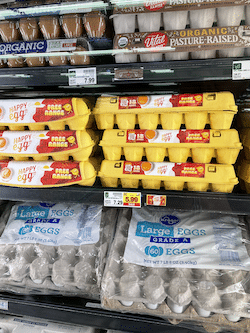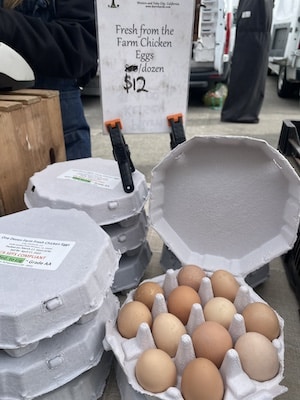 Eggs are in the headlines again! It is Easter and the lure of dying eggs and creating egg-centric dishes for holiday meals increases the attention. But it’s the cost that is getting the headlines this year.
Eggs are in the headlines again! It is Easter and the lure of dying eggs and creating egg-centric dishes for holiday meals increases the attention. But it’s the cost that is getting the headlines this year.
While we were spoiled for paying less than one dollar per dozen eggs pre-pandemic, the realities of supply and demand over the past four years have spiked that cost. But let’s put cost in perspective. Who is really paying the price? And what is the value versus the price? Here’s a few insights into cracking the case on eggs beyond the plate.
The Cost Factor
We’ve all experienced the fluctuation of egg prices over the past couple of years due to the impact of the ever-present bird flu. Depending on location, a dozen eggs may have cost more than $4 to greater than $8 depending on type of egg purchased.
However, in the past several months, egg prices have returned to their normal range as egg producers built up their flocks and bird flu outbreaks were controlled.1 While it’s expected that egg prices will continue to slide downward in 2024, the volatility is still there. The continued impact of bird flu remains a constant threat, as does consumer-imposed regulations.
The “Behind the Cost” Factor

Wild fowl in Hawaii
The aggressive nature of the avian influenza, or bird flu, known as H5N1, emerged in Europe in 2020. It was in early 2022 that outbreaks started appearing in the U.S. Despite the slowdown of the disease last summer, outbreaks in late 2023 to early 2024 appeared, this time in California, requiring more egg-laying chickens to be slaughtered.
According to the U.S. Department of Agriculture, nearly 82 million birds, mostly egg-laying chickens, in 47 U.S. states have been destroyed since the outbreak.2
Despite the biosecurity measures in place throughout commercial operations in the U.S., the risk of outbreaks is probably not going away. Bird flu spreads through wild migratory bird droppings to chicken and turkey farms as well as backyard flocks.
Climate change has been cited as a factor for increased outbreaks as changing weather patterns disrupt the typical migratory patterns of wild birds, creating new habitats closer to poultry farms.3
While the push to “free chickens” from enclosed environments has spurred the passage of consumer-led regulations in various states, it also has increased the cost of chicken production and now, the risk of infection?
In California, agriculture experts are recommending commercial chicken operations keep hens indoors until summer, despite the regulations for cage-free or organically raised poultry. Additionally, backyard chicken owners need to take safety precautions as infections spread regardless of the number of hens.
When chicken flocks must be destroyed, it’s not just an immediate financial impact for the producer. There is a long-term impact as well as it takes at least five months before chicks mature to egg-laying hens. That’s a cost that we all must share.
The Egg-ceptional Benefit
Cost is always a factor when we make purchasing decisions. But the value for the price usually weighs into that final decision. Food prices have increased but unlike some of our food purchases where content size has shrunk to offset the cost, the egg is the exception!

Eggs for sale at a farmer’s market
Egg prices are quoted in terms of price per dozen but per egg, the cost is only 25 to 40 cents! The cost per ounce is equal or less than other high-quality proteins with added benefits. Eggs are nutrient rich, providing a good or excellent source of eight essential nutrients, including choline plus carotenoids lutein and zeaxanthin4 for eye and brain health — all for just 70 calories!
While the egg has had a “bad rap” over the years, current research shows eggs can be part of heart healthy diet patterns in order to meet our essential nutrient needs.
Springtime or anytime, eggs provide the value for the cost! Our egg purchases are an investment in our health and the economic health of those beyond the plate — our farmers and producers.
References
1-3. “Avian flu devastates California’s poultry farms as new wave of outbreaks roils industry,” PBS News Hour, January 27, 2024.
4. “A Dozen Ways to Become an Eggspert!,” American Egg Board’s Egg Nutrition Center, June 2019.
